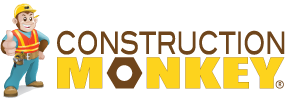- "Based on the risk, add more profit to it."
- "I am not going to do a job that difficult for that amount, I need to cover my risk."
- "We shouldn't bid that project, it is too risky."
Business Development/Sales - BD people are the front end of the spear and are out there trying to dig up new work for the company to survive. These folks are typically pressed to find and capture work based on the metric of total dollars brought in, which is not a bad metric. They should be schooled and should always be looking at the risk of the projects they are pursuing. The company should set some guidelines as far as contractual requirements, types of work, client capabilities, and other metrics to ensure that the work being pursued meets some minimial guidelines for risk tolerance. Better yet a scorecard that puts an overall risk on each project can assist in which projects should get the attention and which ones should go by the wayside.
Estimators - Estimators are out there pricing up work. Doing take-off, getting quotes, totalizing the labor and material, and coming up with general condition costs. The are also everyday looking at risk even though they might not be thinking about it that way. When they look at a church and see the high ceilings, they will apply more labor to that installation to account for the working conditions and the risk of that installation. Estimators should be trained to review each job in the aspect of risk. What are the most risky parts of the project? Are there items we are to purchase that could be easily broke that we will need to install again? Are there other trades that could seriously damage our ability to make a profit? Estimators can not only add appropriate cost (contingency) for these items, but they can ensure that proposals have language that mitigates risk.
Superintendents - The field staff is out there performing work on a daily basis and obviously the most present risk to them is the safety component. How work is installed, what tools are used, the qualifications of the people installing the work, and the state of project all factor into risk. If prior to every installation task they ask the question, "what risks do we have?", they can reduce the amount of risk. A really good process would be for the field team to discuss what potential risks they have with each installation. With a good safety culture this should be happening anyways for the safety component, but their should be additional questions about productivity, quality, rework, and damage. For example, just because the ceiling is done installing a custom Italian chandelier might create too many risks of damage by other trades that could impact the companies bottom line. Either waiting to install the chandelier or notifying the client that they assume risk of other trades would mitigate that risk.
Project Managers - The folks that I have always said are the most important risk managers. They own the safety, production, quality, client management, and financial risk for the project. Every decision should be weighed against possible risk. The best Project Managers mitigate or shift as much risk from the company, since most losses on a project are from risk becoming a reality.
Accountants - Yes they crunch the numbers and on some days they are difficult to understand, but they need to do a lot more. Are the financial reserves in the right places? More than just applying the accounting rules, they need to step back and look at historical numbers and trends to identify risks. Are there customers that have never paid before 60 days? Are there specific projects that fade 10% in profit in the last 5% of the job? Are there vendors that send in late invoices for projects? Each of these questions can yield answers that can create allowances so that the books better reflect the future outcome.
Executives - It starts at the top. Create a culture of identifying and mitigating risk. Make sure every employee knows that it takes 20 years of hard work to create a good company and only a few risky moves to destroy it in a matter of months. You can also go out and build relationships with the clients and vendors to create terms that remove risk for the company.
Risk is the #1 issue for subcontractors. If you don't address it at every level, your company will die. Being a contrator, you are in a business where the failure rate is the second highest. Companies typically do not fail because of a lack or work, but when risk becomes a reality and they cannot pay for that reality. I encourage you to add two questions to your company's meetings: "What is the risk if we do that?" and "What can we do to reduce or mitigate that risk?"